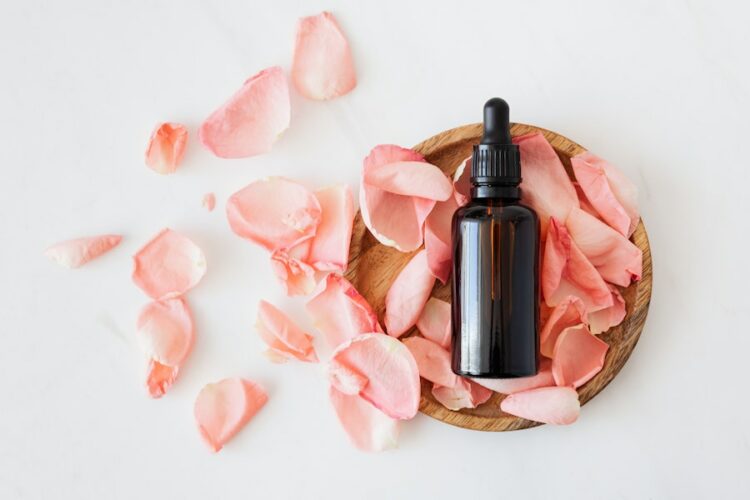In recent years, Aquaphor, a versatile skincare product known for its moisturizing and healing properties, has gained popularity among individuals seeking relief from various skin issues. However, a lingering question remains: Could using Aquaphor potentially worsen yeast infections, a common and discomforting dermatological concern? This article delves into the relationship between Aquaphor and yeast infections, examining scientific research, sharing personal anecdotes, and providing practical guidance to help individuals make informed choices regarding their skincare routines. Whether you’re a devoted Aquaphor user or simply curious about its effects, read on to uncover the truth about its impact on yeast infections.
Will Aquaphor Make Yeast Infection Worse?
While Aquaphor is generally safe and effective for various skincare needs, it may not be suitable for areas prone to yeast infections. The product’s occlusive nature can trap moisture, potentially exacerbating yeast overgrowth. It’s advisable to consult a healthcare professional for specific guidance on managing yeast infections and to consider alternative, yeast infection-friendly moisturizers in such cases.
Understanding Yeast Infections
Yeast infections, medically known as candidiasis, are common fungal infections caused by the overgrowth of a yeast-like fungus called Candida. These infections most commonly affect the genital area in both men and women but can occur in other parts of the body as well. Understanding yeast infections is crucial for effective prevention and treatment.
Candida is normally present in small amounts in the body, but certain factors can lead to an overgrowth and cause an infection. Common triggers include a weakened immune system, hormonal changes (such as during pregnancy or while taking birth control pills), antibiotic use, diabetes, and excessive moisture and warmth in the affected area.
Yeast infections often present with uncomfortable symptoms, which can vary depending on the affected area. In the genital region, women may experience itching, burning, and abnormal vaginal discharge, while men may have itching or a rash on the penis. Oral yeast infections (thrush) can cause white patches in the mouth, and skin yeast infections often result in red, itchy rashes.
Healthcare professionals typically diagnose yeast infections based on the symptoms and physical examination. In some cases, they may take a swab or sample to confirm the presence of Candida. It’s important to differentiate yeast infections from other conditions like bacterial vaginosis or sexually transmitted infections, as treatment approaches differ.
Yeast infections are generally treatable with antifungal medications, such as creams, ointments, or oral tablets, which can be prescribed by a healthcare provider. Preventive measures include practicing good hygiene, avoiding tight-fitting clothing, maintaining a balanced diet, and managing underlying health conditions that may contribute to yeast overgrowth.
Aquaphor Use And Yeast Infection Risk
The use of Aquaphor, a popular skin-care product renowned for its moisturizing and healing properties, can raise questions about its impact on yeast infection risk. While Aquaphor can be a valuable asset for various skin concerns, its application in specific contexts may warrant caution regarding yeast infections.
- Moisture Retention: Aquaphor’s primary function is to lock in moisture and create a protective barrier on the skin. However, in areas prone to yeast infections, such as the genital region, excessive moisture can exacerbate the problem. Candida, the fungus responsible for yeast infections, thrives in warm and moist environments. Therefore, applying Aquaphor to these areas may inadvertently contribute to moisture retention, potentially increasing the risk of yeast overgrowth.
- Consideration For Vulnerable Areas: It’s crucial to consider the location of the application. While Aquaphor may be safe and beneficial for dry or irritated skin on other body parts, using it in areas where yeast infections commonly occur should be approached with caution. These areas include the genital region, under breasts, and skin folds, where moisture and warmth are more likely to promote yeast growth.
- Minimizing Risk: To mitigate yeast infection risk while still enjoying the benefits of Aquaphor, individuals can take certain precautions. These include maintaining proper hygiene, ensuring the treated area is thoroughly dry before applying Aquaphor, and using alternative, yeast-friendly moisturizers in sensitive regions. It’s also advisable to consult a healthcare professional for personalized guidance if yeast infections are a recurring concern.
- Individual Variability: It’s important to note that individuals may react differently to Aquaphor. Some people may experience no issues when using it in yeast-prone areas, while others may be more susceptible to yeast overgrowth. Paying close attention to one’s body and being aware of any changes or discomfort is essential in determining whether Aquaphor use is suitable in specific circumstances.
Alternative Products And Strategies
Alternative Products and Strategies for Yeast Infection Prevention and Relief When dealing with yeast infections or seeking to prevent them, it’s essential to consider alternative products and strategies that can help manage symptoms and minimize the risk of recurrence. Here are some alternatives to consider:
- Antifungal Creams: Over-the-counter antifungal creams, such as those containing clotrimazole or miconazole, can effectively treat yeast infections. These creams can be applied to affected areas as directed and are available without a prescription.
- Probiotics: Probiotic supplements and yogurt containing live cultures of beneficial bacteria, like Lactobacillus acidophilus, can help restore the natural balance of microorganisms in the body. This may aid in preventing yeast infections, especially for individuals prone to recurrent infections.
- Cotton Underwear: Wearing breathable cotton underwear can help reduce moisture and friction in the genital area, making it less hospitable for yeast overgrowth. Avoid tight-fitting synthetic underwear, as these can trap moisture and exacerbate the problem.
- Personal Hygiene: Maintaining good personal hygiene is crucial. Be gentle when cleaning the genital area, using mild, unscented soap and avoiding harsh products that may disrupt the natural pH balance.
- Diet Modification: Some individuals find relief by making dietary changes. Reducing sugar and refined carbohydrate intake can help deprive yeast of the nutrients it needs to thrive. Additionally, consuming foods rich in probiotics, like yogurt, kefir, and fermented foods, may promote a healthy balance of microorganisms.
- Prescription Medications: If yeast infections are recurrent or severe, a healthcare professional may prescribe stronger antifungal medications, such as fluconazole, for oral treatment. It’s essential to follow the prescribed regimen carefully.
- Natural Remedies: Some people explore natural remedies like garlic cloves, tea tree oil, or boric acid suppositories for yeast infection relief. However, these should be used with caution and under the guidance of a healthcare provider, as their safety and efficacy can vary.
- Lifestyle Adjustments: Lifestyle factors, such as managing stress, getting enough sleep, and maintaining a healthy weight, can also influence the body’s susceptibility to yeast infections. A holistic approach to well-being can contribute to a stronger immune system and overall better health.
Conclusion
In conclusion, the relationship between Aquaphor and yeast infections is nuanced. While Aquaphor’s moisturizing and protective properties can be beneficial in many skincare contexts, individuals should exercise caution when using it in areas prone to yeast infections. Excessive moisture retention may contribute to yeast overgrowth. Therefore, it is advisable to consider alternative products and strategies for these sensitive regions. Maintaining proper hygiene, exploring antifungal creams, and probiotics, and seeking professional guidance when needed can help individuals strike a balance between skincare needs and yeast infection prevention, ensuring overall skin health and comfort.
FAQs
Can Aquaphor Be Used To Treat A Yeast Infection?
No, Aquaphor is not an appropriate treatment for yeast infections. It can potentially exacerbate yeast overgrowth due to its moisture-retentive properties.
What Are Common Symptoms Of A Yeast Infection?
Common symptoms include itching, burning, redness, and abnormal discharge in the genital area for both men and women. Oral yeast infections can cause white patches in the mouth.
Can I Use Over-The-Counter Antifungal Creams For Yeast Infections?
Yes, over-the-counter antifungal creams like clotrimazole or miconazole can be effective for treating yeast infections, but it’s important to follow the product instructions carefully.
Are There Lifestyle Changes That Can Help Prevent Yeast Infections?
Yes, maintaining good personal hygiene, wearing breathable cotton underwear, reducing sugar intake, and managing stress can all help reduce the risk of yeast infections.
When Should I Consult A Healthcare Professional About A Yeast Infection?
You should consult a healthcare professional if you experience recurrent or severe yeast infections, have unusual symptoms, or if the infection does not improve with over-the-counter treatments. They can provide proper diagnosis and treatment recommendations.







